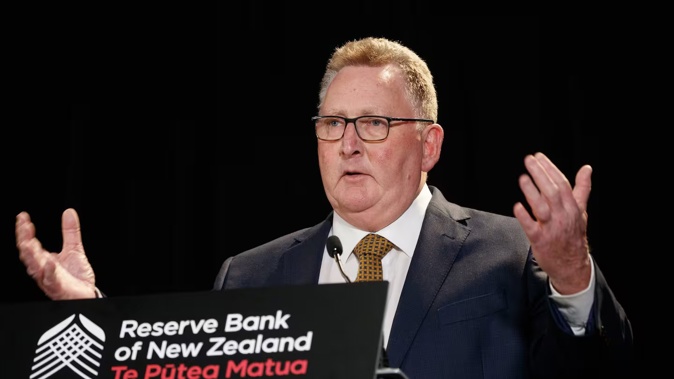
The Reserve Bank has today held the official cash rate unchanged at 5.5 per cent.
It is the seventh successive time the Monetary Policy Committee has left it unchanged as it seeks to push inflation back to its 1-3 per cent target band.
The RBNZ left its forecast for Official Cash Rate cuts largely unchanged. It still sees no cut until the second quarter of next year.
But the Committee warned that policy could need to stay “restrictive for longer than anticipated in the February meeting to ensure the inflation target is met.”
The Committee even discussed the possibility of increasing the OCR at this meeting.
But assessed that, while the near-term balance of risks around inflation are skewed to the upside, there is more confidence that inflation will decline to within the target range over the medium term.
The financial markets took the statement as a hawkish message based on a slight increase in the forecast track for the OCR, the New Zealand dollar rallying by about half a US cent to US61.50c on the news.
”It was definitely a hawkish surprise for the market,” Westpac senior market strategist Imre Speizer said.
”The number one thing was that they increased the OCR forecast by 5 basis points at the peak, indicating some chance still of a rate hike in this cycle, before they start cutting,” Speizer said.
RBNZ forecasts have the OCR peaking at 5.65 per cent in the fourth quarter this year, from 5.60 per cent at the previous monetary policy statement released in February.
”Pushing it higher tells you that they are more concerned about inflation and that they might need things to be restrictive for longer, and the rate cuts will start later,” he said.
There was considerably more concern noted about the strength of service sector inflation, and acknowledgement that some aspects of inflation are not that sensitive to interest rates, said ASB chief economist Nick Tuffley.
“The RBNZ’s inflation forecast is higher over the rest of 2024, barely getting back in the 1-3 per cent target band by the end of 2024,” he said.
“The forecasts show inflation very near the 2 per cent mid-point over the second half of 2025 but not hitting 2 per cent until the first half of 2026, later than in February’s forecasts.”
“We have retained our view that the RBNZ will start cutting the OCR from February 2025, but the risk is later.”
The Committee referred to the upcoming Budget. “The signalled lower government spending is currently and expected to continue contributing to weaker aggregate demand. Any impact of potential changes in the forthcoming Budget to government spending, or private spending due to tax cuts, remain to be assessed,” it said.
Despite the labour market cooling off and unemployment rising, higher dwelling rents, insurance costs, council rates, and other domestic services were cited as drivers of inflation.
The RBNZ said restrictive monetary policy has reduced capacity pressures in the New Zealand economy and lowered consumer price inflation. Annual consumer price inflation is expected to return to within the Committee’s 1 to 3 per cent target range by the end of 2024.
EARLIER
The divide between when markets expect the first rate cuts and the Reserve Bank’s forecast outlook will be tested today as Governor Adrian Orr delivers the Bank’s latest Monetary Policy Statement - due at 2pm.
Markets are still pricing in cuts later this year, while the Reserve Bank (RBNZ) is expected to hold firm on its longstanding forecast for the first cut in May next year.
Nobody expects a change to the Official Cash Rate (OCR) in the MPS but the RBNZ’s latest assessment of the economic outlook is hotly anticipated.
Economists warn that those looking for signs that rate cuts are creeping closer will probably be disappointed.
As ANZ chief economist Sharon Zollner put it, don’t expect the RBNZ to be “in any hurry to signal imminent cuts to an impatient market”.
“We expect the RBNZ to maintain its comment that ‘interest rates need to remain at a restrictive level for a sustained period’, essentially describing their OCR track. But there’s plenty of nuance that matters too,” Zollner said.
ANZ’s forecast for rate cuts currently sits in line with the RBNZ for May.
Kiwibank economists have been more optimistic, closer to the market view, that cuts will be needed by November.
“By our forecasts, we see inflation returning to within the RBNZ’s 1-3 per cent target by the September [third] quarter. And it’s not until mid-October that we receive the data and, hopefully, confirmation. Thus, leaving November as the earliest kickoff date for rate cuts,” Kiwibank chief economist Jarrod Kerr said.
“We expect nothing but we think differently. We continue to expect the next move to be a cut in November, well ahead of the RBNZ’s current OCR track, which has no cut until mid-2025.”
The market was getting ahead of itself in the near term, Kerr said.
As of last week the overnight index swap (OIS) curve saw traders placing some handsome bets on cuts to come as early as August (-11 basis points at 5.39 per cent), Kerr said.
There were 42 basis points of cuts priced by November.
Whatever the RBNZ says today there will be a big focus on the market reaction.
Generally, an OCR hike means mortgage and savings rates go up.
Reserve Bank research in 2021 found a 1 per cent change in the OCR typically moved average two-year mortgage rates by 0.34 per cent within one month.
But the amount of funding banks get from offshore markets, as opposed to local deposit-taking, can also affect the impact on mortgages.
Liam Dann is business editor-at-large for the New Zealand Herald. He is a senior writer and columnist, and also presents and produces videos and podcasts. He joined the Herald in 2003.
Take your Radio, Podcasts and Music with you









